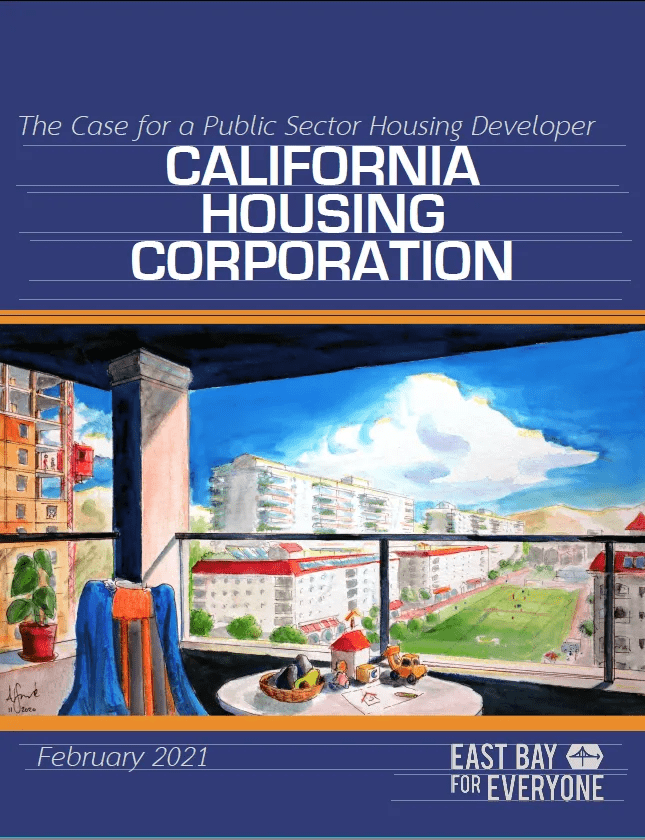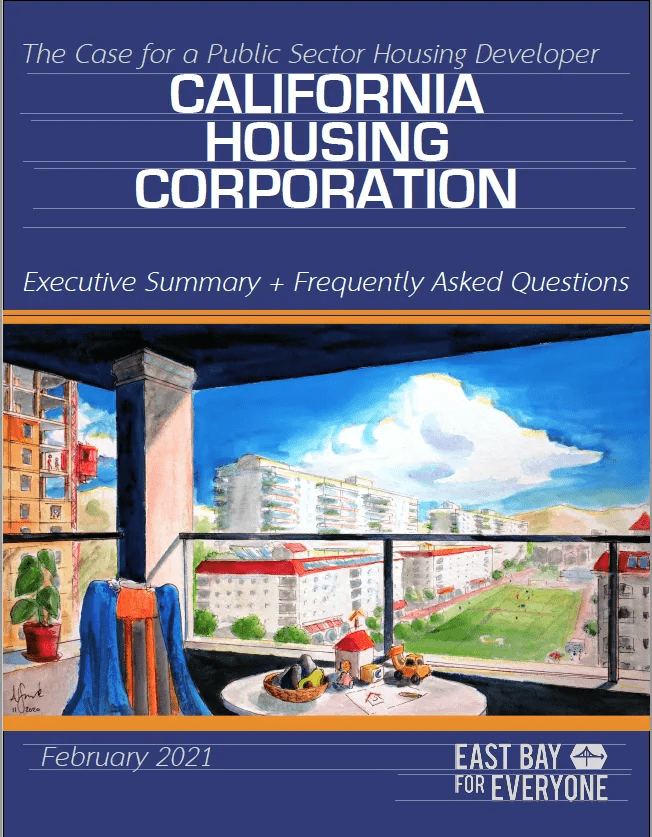February 9, 2021
East Bay for Everyone is a membership organization devoted to building just cities through housing, land use and mobility policies. In addition to supporting zoning reform and tenant protections, East Bay for Everyone recognizes the need for social housing policy to address affordability and ownership in the provision of housing for low and middle-income people. Accordingly, East Bay for Everyone’s Social Housing Working Group has developed a white paper entitled: “California Housing Corporation: The Case for a Public Sector Developer.”
California has a shortage of an estimated 3.5 million homes, including 1.5 million homes affordable to lower-income households. While private sector developers are critical to meeting this goal, they are not sufficient on their own for three basic reasons.
- Wages are too low for millions of California households to afford new or even filtered private rental housing without a debilitating cost burden. Overcrowded and unsafe housing conditions or grueling mega-commutes are the daily reality for many. These households need more affordable housing options, especially near jobs and transit.
- In a volatile business cycle, private housing production plummets in downturns as investment flees for safer returns and the construction workforce shrinks. While our homeless population grows, blue collar layoffs and empty lots abound. California must build 250,000 units per year to address its housing shortage; it cannot afford two or three years of producing a mere 50,000 units.
- Neither private for-profit nor nonprofit affordable housing developers are producing modern housing affordable to middle-income households. Market housing costs are too high for them, but oversubscribed subsidies primarily target low-income households.
A public sector development firm is a necessary part of a comprehensive package of reforms to seriously address the underproduction of housing in California. Where the private market cannot or will not provide across time (recessions) and across populations (low, moderate and above-moderate income households), the state should step in to ensure desperately-needed homes are built.
Indeed AB387, introduced by Assemblymembers Alex Lee and Buffy Wicks in February 2021, recognizes the need for a state agency to develop “mixed-income rental and limited equity homeownership housing and mixed-use developments to address the shortage of affordable homes for low and moderate-income households.” This paper will present one vision for how a mixed-income public sector developer might develop homes for low and middle-income households in partnership with local governments and non-profit property managers. This is, however, one perspective. Ultimately social housing in California will be shaped by the diverse coalition of people and movements that recognize the need for a greater public role in the provision of housing.
Public led development can help directly provide sorely needed low and middle income homes. With longer financing horizons and a focus on sustainable revenue rather than maximizing profits for investors, a public sector development firm can deliver:
- stabilized labor demand across the business cycle;
- mixed-income rental; and
- limited equity homeownership through long-term leases .
This state housing corporation would aim–over time–to self-finance housing through internal cross-subsidization across incomes. Surplus revenues could be reinvested into capital reserves for renovations and new construction across the state.
In order to meet housing production goals for low and middle-income Californians need the public sector to take a more active role in building an inclusive, sustainable and affordable Golden State.

